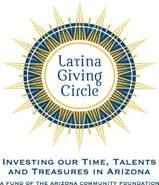
Demand to Learn recently took a team of youth, moms, educators and community organizers to Denver to learn about the restorative practices (RP) that have transformed a school there from a prison pipeline to a model of smart school discipline. I was lucky enough to attend and learned far more than I imagined I would. I thought I would be learning about their discipline procedures and I did learn about that, but what struck me was that the majority of restorative practices are not about how to deal with conflict and rule infractions but how to build relationships and create a culture of caring and respect.
Training for everyone (teachers, students, and support staff all the way down to the janitor) gives school staff a common language, common goal, and clear expectations that everyone agrees to with regard to student discipline. A dedicated RP coordinator supports teachers by helping them use a graduated ladder of tools before a student is removed from class or referred for discipline. Every referral is followed up with problem-solving, restorative conversations, and acknowledgment and accountability by all parties. Consequences are still a part of RP but are used with the goal of restoration rather than retribution.
Those are some backbone essentials but what really struck me was the interactions I got to witness in the hallways and classrooms. A few of us were allowed to follow the RP coordinator to a classroom to observe RP in action. She gently, respectfully and sometimes even non-verbally held every kid we came across accountable for following the rules they agreed to. Eye contact and a nonverbal tap on her own head took down hats and hoodies. She addressed each child by name as she checked for hall passes sending them cheerfully back to class if needed. She kindly but firmly reminded one child who was on the way to the nurse with no pass that she would follow up with the nurse and the student’s teacher. I knew she would and so did the child. She knew each student by name and there was mutual respect and appreciation in each interaction.
A classroom I visited had the same structured yet nurturing feel to it. It was a small class of 16 AP students. The kids were instructed to quietly, through non-verbal actions and eye contact, pair up with a partner from the opposite side of the room and then walk the hallway discussing the assignment they just completed. The pairing up process failed. A couple quick-thinking girls scooped up the first person they saw but most of the boys settled on one side of the room and no one was particularly interested in making eye contact, especially with an audience! I felt for the kids and the teacher as I watched the kids looking down, around, or staring ahead stiffly, giving zero room to catch, even accidentally, some else’s eye. The teacher encouraged for a bit and then, realizing it was not going to happen, helped the students pair up, no questions asked, and she didn’t miss a beat as she transitioned them to the hallway. We walked along as the students chatted quietly. I had never before seen a teacher trust a class to wander the halls, but it occurred to me that this was a great example of RP in action again. The rules, structure, and boundaries were clear and the students knew they could count on being supported by their teacher in what they were being asked to do.
It was this combination of accountability and relationship building that is the real meat of restorative practices and is why when RP is implemented with fidelity, few conflicts ever escalate to the point of suspension or expulsion.
Laura Hudson is a volunteer organizer with the ACLU of Arizona’s Demand to Learn campaign.
This trip was made possible thanks to the Latina Giving Circle.



